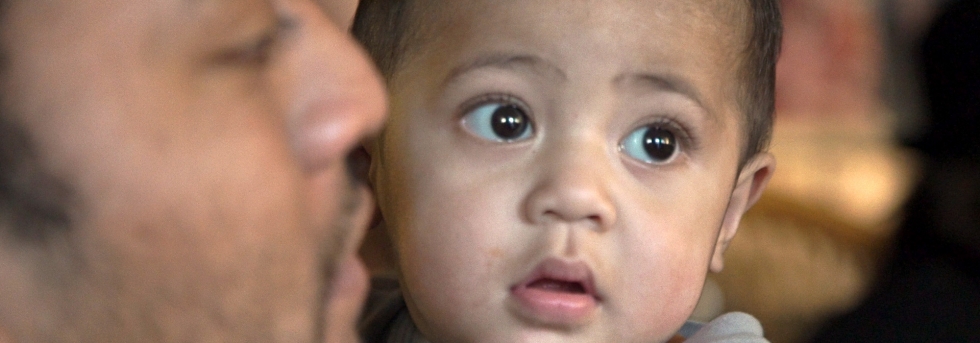Breaking Down Data to Help All Families Thrive
At Voices for Utah Children we start with the question, “Is it good for kids?” We advocate for data-driven policy and community solutions to improve the lives of all children. This data brief and case study examines why the collection, analysis and reporting of race and ethnicity data is critical to help drive policy solutions for Utah kids. If we only report on whole populations, we may overlook important racial or ethnic trends and disparities. By sharing outcome data for different racial and ethnic groups, we can help address systemic problems and ensure greater accountability in policymaking and public programs.
Case Example of Utah Native Hawaiian/ Pacific Islander Birth Outcomes
In Utah, there are nearly 38,00 Native Hawaiians/Pacific Islanders (NHPIs). The overall percentage of NHPIs living in Salt Lake City is greater than any other city in the continental U.S. The median age of Utah NHPIs is 20.2, making them one of the youngest populations in Utah.
In 2010, the Utah Department of Health Office of Health Disparities examined the infant mortality rate for the NHPI community for the first time. Previously, birth outcomes for the NHPI community had been reported together with birth outcomes for Utah Asian Americans. When grouped together, the infant mortality rate for the Asian American and Pacific Islander communities was lower than the state average at 4.6 deaths per 1,000 births, compared to the overall average of 5.2 deaths per 1,000 births.
However in 2010, when prenatal and birth outcomes for NHPIs were examined separately, the data told a very different story: Pacific Islander infants under one year had nearly twice the death rate (8.8 deaths/1,000 births) of infants statewide (4.5 deaths/1,000 births). While only 1.3% of all Utah infants were born to Pacific Islander mothers, their babies made up 2.5% of all infants who died. Other birth outcomes disparities among Pacific Islanders, including access to prenatal care, also surfaced.
These alarming findings underscored the importance of greater access to and breakdown of ethnic/racial data to understand population trends. In response, the Office of Health Disparities conducted additional research and investigation. OHD worked collaboratively with state and local partners to develop a community-based health promotion and education program to reach NHPI residents in Utah. The “It Takes a Village: Giving Our Babies the Best Chance” (ITAV) project raises awareness and addresses birth outcomes disparities in the context of Pacific Islander cultural beliefs and practices. The ITAV project has been designated a promising, innovative practice from national public health organizations. Results show that the ITAV project effectively raises awareness, improves knowledge, and increases self-efficacy among NHPI participants. In 2019, the University of Utah Department of Family and Preventive Medicine received funding to expand the ITAV project to St. George with the Southern Utah Pacific Islander Health Coalition, broadening the reach and impact of the project. In addition, the data disaggregation at the root of the ITAV project inspired other states, including California, to collect and report disaggregated health data for Native Hawaiians and Pacific Islander populations.
Moving Forward
All too often, public institutions and systems report data on whole populations or broad population categories. Yet this case study highlights how public institutions can also lead the way, rethinking current practice around data disaggregation, reporting and response.
Going forward, Voices for Utah Children is actively working to ensure that the data we share, such as the annual Kids Count Data book, can better disaggregate Utah demographics. We call upon more state and local public institutions and agencies to do the same. Our state agencies must continue to be leaders in data disaggregation to ensure families are getting the care they need. Disparities cannot be fully identified or addressed without adequate data and reporting.
It is equally important to ensure that disparities identified are met with culturally appropriate resources, investments and policy change. The ITAV project demonstrates how disaggregated data, coupled with community-based solutions, can help more families be empowered to change their health practices. While many factors influence health outcomes and trends, community-driven public health interventions, like the ITAV project, can play a significant role.
However, disparities in maternal and birth outcomes persist in Utah. NHPI mothers are still receiving less prenatal care than other populations in Utah. This points to the need to address more systemic inequities in access to care, insurance coverage and culturally-competent health care services. All mothers and infants in Utah deserve a healthy start, regardless of their culture or background. Policies that promote affordable, quality health care, including Medicaid coverage, access to prenatal services and mother-infant support programs can help improve the lives of all Utah moms, babies and communities.
To download a copy of the brief and references:






